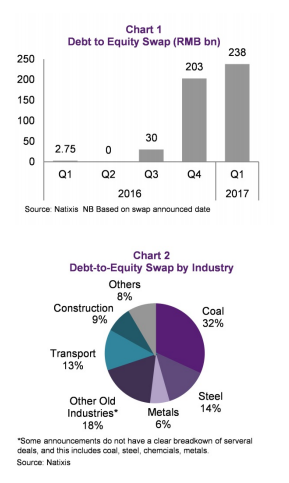China’s Debt To Equity Swaps
Throughout 2016 the topic of China’s monumental debt mountain was the most discussed in the financial community. Even Chinese policymakers themselves began to take a serious look at the issue, and official recognition of the problem emerged in March as the state began to sanction debt for equity swaps.
These swaps may only delay the inevitable for some companies, but they are more symbolic than anything else. The debt for equity swap program is just one of many tools in the Chinese government’s regulatory toolbox as it attempts to stabilize overall debt levels and companies have been jumping at the chance to clean up their balance sheets using this method.
China’s Debt To Equity Swaps Continue, But They Won’t Solve The Country’s Debt Problems
Until the third quarter of 2016 debt for equity swaps were virtually unheard of in China (the government only announced it would authorize this method to reduce corporate indebtedness in March 2016). According to analysts at Natixis, only RMB30 billion of such deals took place in the third quarter of 2016, up from zero in Q2. The floodgates opened in the fourth quarter with RMB203 billion of debt for equity swaps taking place.
One of the largest first deals was Huarong Energy, which announced, a few weeks after the March 2016 sanctioning, that a dozen banks had agreed to swap loans totaling Rmb12.9 billion ($1.9 billion) for shares in the distressed shipbuilder-turned-oil exploration company. It is expected that the first phase of debt for equity swaps will involve no more than RMB3 trillion, compared to China’s total outstanding corporate debt stock of RMB120 trillion.

China’s debt to equity swaps
However, policymakers might find the appetite for such debt restructurings to be bigger than initially expected as the tally for first quarter swaps came in at RMB238 billion, up 17% quarter-on-quarter and taking the total to just under RMB500 billion since the beginning of Q3 2016.









Leave A Comment